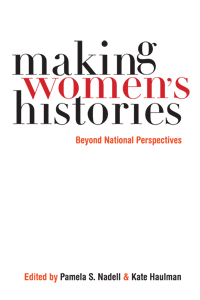How did March become the month for celebrating women’s history?
In the summer of 1979, leaders of forty-three different women’s associations participated in a seminar organized by the pioneering historian Gerda Lerner (1920-2013) at Sarah Lawrence College. For fifteen days, women from organizations like the Girl Scouts and the American Association of University Women lived together and studied American women’s history.
At the end, as they bid one another and their college days goodbye, these women agreed that they would take home a “group project.” Together, they would organize the first “Women’s History Week.” The organizers knew that behind them stood hundreds of thousands of women. If they could harness the power of these collectives, they could press ahead for women’s history programming, and not just at the local level.
A year later, the seminar attendees had won congressional and presidential support for the first national Women’s History Week. Originally timed to coincide with March 8th, International Women’s Day, a date fixed early in the twentieth century for expressing female solidarity, seven years later, Women’s History Week had grown into National Women’s History Month. The rest, as we say, is history.
Since then, March has become the month in the U.S. for displaying women’s histories. My new book, Making Women’s Histories, co-edited with American University Professor Kate Haulman, insists that the teaching and writing of women’s histories was a political project long before Women’s History Month emerged. Just as the feminist movement of the 1960s had propelled women into the professions, so too had it inserted women into the history—just as these women had learned that summer. No matter where or when, the goal of making women’s histories has always been intertwined with the project of advancing women in society.
If all history is politics, then the making of women’s histories, and not only during the month of March, attests to the power of the past to advance women in the present.
Pamela S. Nadell is Professor of History and Director of the Jewish Studies Program at American University. She is the author of Women Who Would Be Rabbis: A History of Women’s Ordination, 1889-1985, which was a finalist for the National Jewish Book Award, and co-editor of Women and American Judaism: Historical Perspectives and Making Women’s Histories: Beyond National Perspectives (NYU Press, 2013).

